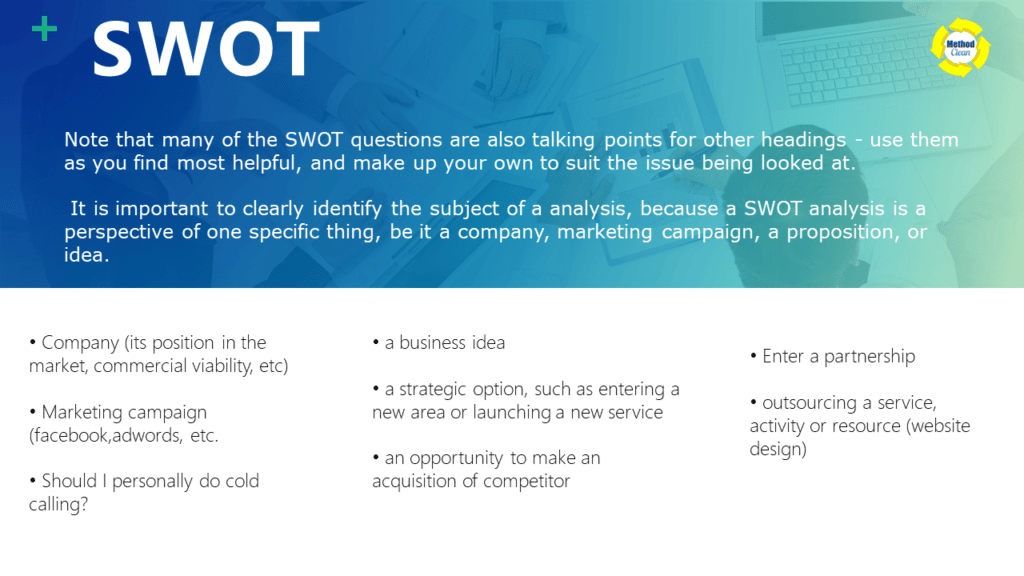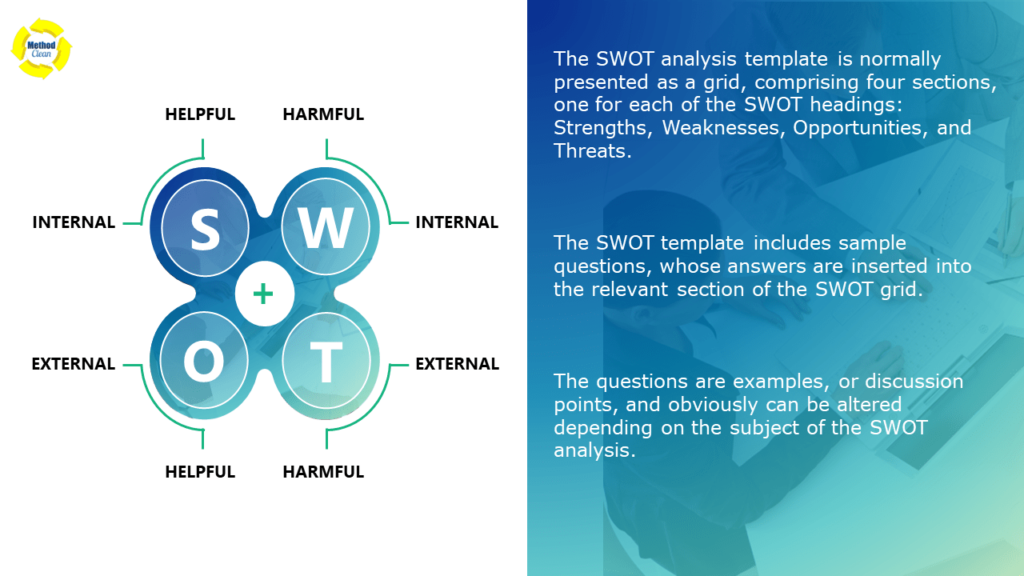Maximize Your Cleaning Business with SWOT Analysis
SWOT analysis is an essential tool for commercial cleaning and janitorial services, not just large corporations. Often, cleaning services overlook its benefits, thinking it’s only for big companies. However, once you start answering some of the SWOT questions, you’ll realize these are the same questions you subconsciously consider daily. The key is to write them down!
By leveraging SWOT analysis, cleaning businesses can enhance understanding and decision-making in various situations. SWOT stands for Strengths, Weaknesses, Opportunities, and Threats, providing a comprehensive framework for assessing strategy, market position, and future direction.
The SWOT framework was developed in the 1960s by Albert Humphrey, a management consultant at the Stanford Research Institute. Humphrey aimed to identify why corporate planning often failed, and his work led to the creation of this powerful tool that continues to aid businesses in strategic planning and decision-making.
Utilizing SWOT analysis is straightforward and invaluable for business planning, strategic development, competitor evaluation, marketing, product innovation, and research. This method offers a structured way to organize and assess data, facilitating better understanding, presentation, discussion, and decision-making.
The SWOT template promotes proactive thinking, moving beyond instinctive reactions to informed, strategic planning. Whether you’re planning your next business move or evaluating your competitive landscape, SWOT analysis is your go-to tool for comprehensive decision-making.
SWOT Analysis Template
The SWOT analysis template is typically presented as a grid, divided into four sections: Strengths, Weaknesses, Opportunities, and Threats. This structured layout helps organize the analysis effectively. Below, you’ll find a SWOT template that includes sample questions. These questions serve as examples or discussion points, and you can customize them based on the specific subject of your SWOT analysis.
Many of the SWOT questions can also apply to other sections, so feel free to adapt them as needed. The flexibility of these questions allows for a comprehensive examination of the topic at hand. Remember, it’s crucial to clearly define the subject of your SWOT analysis, as it provides a focused perspective on a particular entity, whether it’s a company, product, proposition, idea, method, or option.
Using this template will help you systematically assess various factors, ensuring a thorough and insightful analysis. Customize the questions to fit the specific issue you are analyzing, and make the most of this powerful strategic tool.
Here are some examples of what a SWOT analysis can be used to assess:
- A cleaning company (its position in the market, commercial viability, etc.)
- A method of sales for cleaning services
- A cleaning product or brand
- A business idea for a new cleaning service
- A strategic option, such as entering a new market or launching a new cleaning service
- A potential partnership with other businesses
- The use of a new cleaning tool or technology
- Outsourcing a service, activity, or resource within the cleaning industry
- An investment opportunity in the cleaning sector
By using the SWOT tool you can create a long term local business model.
Strengths of a Cleaning Service: Key Areas to Assess
When conducting a SWOT analysis for your cleaning service, it’s important to clearly identify the strengths that contribute to your business’s success. Here are some specific areas to consider:
Advantages of the Proposition:
- What makes your cleaning service attractive to clients? Highlight the unique benefits that set your service apart.
Capabilities:
- What are the core competencies of your cleaning business? Identify the skills and expertise that give you an edge.
Competitive Advantages:
- How does your service stand out from competitors? Focus on what makes your business unique and better than others.
Unique Selling Points (USPs):
- What are the key benefits your clients receive from your service? Emphasize the distinct features and advantages you offer.
Resources, Assets, People:
- What assets, including staff and equipment, do you have? Detail the valuable resources that support your operations.
Experience, Knowledge, Data:
- What expertise and data support your product or brand? Showcase your industry experience and the knowledge base you possess.
Financial Reserves, Likely Returns:
- What is the financial outlook for your services? Highlight your financial stability and potential for profitability.
Marketing – Reach, Distribution, Awareness:
- How effective is your marketing? Describe your marketing strategies and the reach of your promotional efforts.
Innovative Approaches:
- Are there new methods or ideas you plan to implement? Focus on your ability to innovate and stay ahead of industry trends.
Location and Geographical Reach:
- How does your location affect your market reach? Highlight any geographical advantages that benefit your business.
Price, Value, Quality:
- How do your prices and quality compare to competitors? Emphasize the value and quality of your services.
Accreditations, Qualifications, Certifications:
- What certifications and qualifications does your business hold? Showcase any official recognitions that add credibility.
Processes, Systems, IT, Communications:
- What systems are in place for smooth operation? Highlight the efficiency and effectiveness of your operational processes.
By clearly defining and exploring these strengths in your SWOT analysis, you can ensure a comprehensive understanding of the positive factors that contribute to your cleaning service’s success. This will guide strategic decision-making and help position your business for continued growth and competitive advantage.
Weaknesses of a Cleaning Service: Key Areas to Assess
When conducting a SWOT analysis for your cleaning service, it’s important to identify and understand the weaknesses that may hinder your business’s success. Here are some specific areas to consider:
Disadvantages of the Proposition:
- What aspects of your cleaning service might be less attractive to clients? Identify any potential drawbacks or limitations.
Gaps in Capabilities:
- Are there any skills or resources your business lacks? Highlight areas where your capabilities may be insufficient.
Lack of Competitive Strength:
- How do you compare to competitors in terms of strengths? Identify where you may fall short against other cleaning services.
Reputation, Presence, and Reach:
- What is your current market presence and reputation? Assess any weaknesses in brand recognition or market reach.
Financials:
- What financial challenges do you face? Highlight any issues with profitability, financial stability, or funding.
Own Known Vulnerabilities:
- What are the internal vulnerabilities you are aware of? Identify specific weaknesses that could be exploited by competitors.
Timescales, Deadlines, and Pressures:
- Are there any issues with meeting deadlines or managing pressures? Assess your ability to handle time-sensitive projects.
Cash Flow, Start-Up Cash-Drain:
- How is your cash flow situation? Highlight any problems with cash flow management or initial financial strain.
Effects on Core Activities, Distraction:
- Are there distractions affecting your core activities? Identify any factors that divert attention from essential tasks.
Reliability of Data, Plan Predictability:
- How reliable is your data and planning? Assess the accuracy and predictability of your business plans and forecasts.
Morale, Commitment, Leadership:
- What is the state of employee morale and leadership? Highlight any issues with staff commitment or management effectiveness.
Accreditations, Qualifications, Certifications:
- Are there any missing accreditations or certifications? Identify any gaps in official recognitions that could impact credibility.
Processes and Systems:
- How effective are your processes and systems? Assess any weaknesses in operational efficiency or technology infrastructure.
Management Cover, Succession:
- Do you have adequate management cover and succession planning? Highlight any vulnerabilities in leadership continuity.
By clearly defining and exploring these weaknesses in your SWOT analysis, you can understand the internal challenges your cleaning service faces. This will guide strategic decision-making and help you address and mitigate these weaknesses to strengthen your business.

Opportunities for a Cleaning Service: Key Areas to Assess
When conducting a SWOT analysis for your cleaning service, it’s crucial to identify the opportunities that can help drive your business forward. Here are some specific areas to consider:
Market Developments:
- Are there any emerging markets or expanding segments within the cleaning industry that you can tap into? Look for areas with growing demand.
Competitors’ Vulnerabilities:
- What weaknesses do your competitors have that you can exploit? Identify gaps in their offerings that your service can fill.
Industry or Lifestyle Trends:
- Are there any current trends in the industry or changes in lifestyle that can benefit your business? For example, increased demand for eco-friendly cleaning products or services.
Technology Development and Innovation:
- What new technologies or innovations can you leverage? Consider advancements in cleaning equipment, software, or methods that can improve efficiency and effectiveness.
Niche Target Markets:
- Are there specific niche markets that you can target? Look for underserved segments such as medical offices, industrial facilities, or educational institutions.
New Unique Selling Points (USPs):
- Can you develop new USPs that differentiate your service? Consider adding specialized services or features that set you apart from competitors.
Tactics – Surprise, Major Contracts, etc.:
- Are there any tactical opportunities such as securing major contracts or surprising the market with a new service? Think about strategic moves that can give you a competitive edge.
Business and Service Development:
- What opportunities exist for expanding your business or services? Consider adding new services, expanding to new locations, or diversifying your offerings.
Information and Research:
- How can you use information and research to your advantage? Stay updated with industry trends, customer preferences, and competitive insights to inform your strategy.
Partnerships, Agencies, Distribution:
- Are there potential partnerships or distribution channels that you can explore? Collaborate with other businesses or agencies to expand your reach.
Volumes, Production, Economies:
- Can you increase production volumes or achieve economies of scale? Look for ways to enhance operational efficiency and reduce costs.
Seasonal, Weather, Fashion Influences:
- How can seasonal, weather, or fashion influences create opportunities? For example, offering special cleaning services for different seasons or events.
By clearly defining and exploring these opportunities in your SWOT analysis, you can identify potential areas for growth and strategic advantage. This will guide your decision-making process and help you capitalize on favorable conditions to enhance your cleaning service.
Threats to a Cleaning Service: Key Areas to Assess
When conducting a SWOT analysis for your cleaning service, it’s important to identify potential threats that could negatively impact your business. Here are some specific areas to consider:
Environmental Effects:
- How do environmental regulations and concerns affect your business? Consider the impact of sustainability requirements and potential restrictions.
IT Developments:
- What technological advancements could disrupt your operations? Stay aware of changes in cleaning technology or software that could render your current systems obsolete.
Competitor Intentions:
- What strategies are your competitors pursuing? Analyze their actions and plans to anticipate competitive pressures and responses.
Market Demand:
- Are there fluctuations in market demand for cleaning services? Monitor trends that could lead to reduced demand for your services.
New Technologies, Services, Ideas:
- Are there new technologies, services, or ideas that could outpace your offerings? Stay informed about innovations that might overshadow your current services.
Vital Contracts and Partners:
- Are there risks associated with losing key contracts or partners? Identify crucial business relationships that, if lost, could harm your operations.
Sustaining Internal Capabilities:
- How sustainable are your internal capabilities? Assess your ability to maintain the skills, resources, and processes required to deliver your services effectively.
Obstacles Faced:
- What obstacles does your business face? Consider external challenges such as regulatory changes, economic downturns, or market saturation.
Insurmountable Weaknesses:
- Are there any weaknesses in your business that are difficult to overcome? Identify and address critical vulnerabilities that could pose significant risks.
Loss of Key Staff:
- How would the loss of key staff members affect your business? Plan for succession and mitigate the risk of losing essential personnel.
Sustainable Financial Backing:
- Is your financial backing sustainable? Assess the stability of your financial resources and the potential impact of financial shortfalls.
Economy – Home, Nation:
- How do local and national economic conditions affect your business? Consider economic factors that could influence client budgets and spending.
Seasonality, Weather Effects:
- How do seasonal variations and weather conditions impact your operations? Plan for fluctuations in demand and operational challenges related to seasonality and weather.
By clearly defining and exploring these threats in your SWOT analysis, you can identify potential risks and develop strategies to mitigate them. This proactive approach will help ensure the resilience and long-term success of your cleaning service by research.



